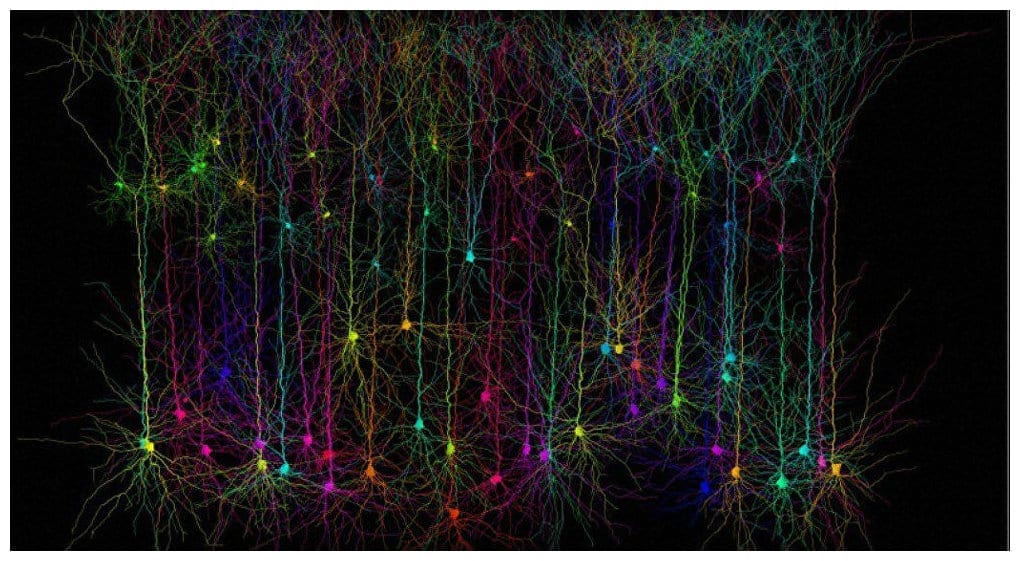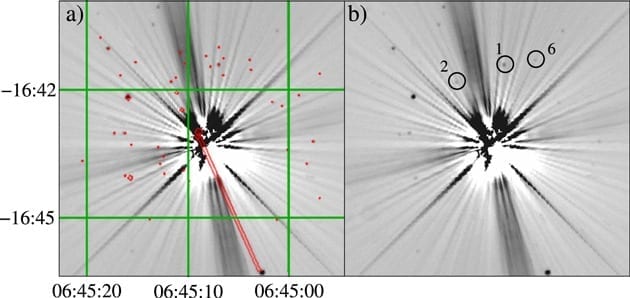

Discovery opens doors to creation of biological supercomputers that are about the size of a book
The substance that provides energy to all the cells in our bodies, Adenosine triphosphate (ATP), may also be able to power the next generation of supercomputers.
That is what an international team of researchers led by Prof. Nicolau, the Chair of the Department of Bioengineering at McGill, believe.
They’ve published an article on the subject this week in the Proceedings of the National Academy of Sciences (PNAS), in which they describe a model of a biological computer that they have created that is able to process information very quickly and accurately using parallel networks in the same way that massive electronic super computers do.
Except that the model bio supercomputer they have created is a whole lot smaller than current supercomputers, uses much less energy, and uses proteins present in all living cells to function.
“We’ve managed to create a very complex network in a very small area,” says Dan Nicolau, Sr. with a laugh. He began working on the idea with his son, Dan Jr., more than a decade ago and was then joined by colleagues from Germany, Sweden and The Netherlands, some 7 years ago. “This started as a back of an envelope idea, after too much rum I think, with drawings of what looked like small worms exploring mazes.”
The model bio-supercomputer that the Nicolaus (father and son) and their colleagues have created came about thanks to a combination of geometrical modelling and engineering knowhow (on the nano scale). It is a first step, in showing that this kind of biological supercomputer can actually work.
The circuit the researchers have created looks a bit like a road map of a busy and very organized city as seen from a plane. Just as in a city, cars and trucks of different sizes, powered by motors of different kinds, navigate through channels that have been created for them, consuming the fuel they need to keep moving.
But in the case of the biocomputer, the city is a chip measuring about 1.5 cm square in which channels have been etched. Instead of the electrons that are propelled by an electrical charge and move around within a traditional microchip, short strings of proteins (which the researchers call biological agents) travel around the circuit in a controlled way, their movements powered by ATP, the chemical that is, in some ways, the juice of life for everything from plants to politicians.
Because it is run by biological agents, and as a result hardly heats up at all, the model bio-supercomputer that the researchers have developed uses far less energy than standard electronic supercomputers do, making it more sustainable. Traditional supercomputers use so much electricity, that they heat up a lot and then need to be cooled down, often requiring their own power plant to function.
Although the model bio supercomputer was able to very efficiently tackle a complex classical mathematical problem by using parallel computing of the kind used by supercomputers, the researchers recognize that there is still a lot of work ahead to move from the model they have created to a full-scale functional computer.
Learn more – McGill University
The Latest on: Bio-supercomputer
[google_news title=”” keyword=”bio-supercomputer” num_posts=”10″ blurb_length=”0″ show_thumb=”left”]
via Google News
The Latest on: Bio-supercomputer
- Common Sense Is AI’s Glass Ceilingon May 6, 2024 at 9:35 am
But a lingering roadblock may revolve around common sense development. Common sense may be AI’s glass ceiling. And until this glass ceiling is shattered, our confidence about completely handing the ...
- Two facilities team up for structural biology advances with X-ray free-electron lasers and exascale computingon May 6, 2024 at 7:42 am
Plans to unite the capabilities of two cutting-edge technological facilities promise to usher in a new era of dynamic structural biology. Through DOE's Integrated Research Infrastructure, or IRI, ...
- Supercomputer predicts humans will face a ‘triple whammy’ extinction eventon May 1, 2024 at 9:15 am
While climate change is a very real threat to today’s population, this apocalyptic scenario, predicted by a supercomputer, will be caused by all the continents crashing into each other to form ...
- For sale: government supercomputer, heavily usedon May 1, 2024 at 9:01 am
Cheyenne Supercomputer is up for auction now. By Tom Hawking | Published May 1, 2024 12:01 PM EDT Cheyenne is located at the NCAR's Supercomputing Center in Cheyenne, Wyoming. You'll have to pick ...
- You Can Now Own a Supercomputer With 306TB RAM, 8,064 Xeon CPUson April 30, 2024 at 5:00 pm
That doesn't have to be the case for the Cheyenne Supercomputer, though, as it could be all yours if you have enough scratch and a facility to run it. The government is currently holding an ...
- Here’s your chance to own a decommissioned US government supercomputeron April 30, 2024 at 7:52 am
On Tuesday, the US General Services Administration began an auction for the decommissioned Cheyenne supercomputer, located in Cheyenne, Wyoming. The 5.34-petaflop supercomputer ranked as the 20th ...
- New Cadence supercomputers aim to speed creation of chips, softwareon April 17, 2024 at 2:04 pm
opens new tab on Wednesday introduced the latest version of supercomputer based around a custom computing chip designed to speed up the creation of other computing chips and the software that will ...
- LANL unveils new supercomputer to advance use of AIon April 14, 2024 at 5:00 pm
LOS ALAMOS — Los Alamos National Laboratory on Monday unveiled its newest supercomputer, which officials say will accelerate how they integrate artificial intelligence into both national ...
- Why we need supercomputers — and electricityon April 13, 2024 at 5:00 pm
On Monday, Los Alamos National Laboratory will cut the ribbon on our newest supercomputer, Venado, named after a peak in the mountains above Taos. This won’t be the world’s fastest ...
- Supercomputer predicts Grand National with favourite Corach Rambler missing out as 14-1 outsider romps to victoryon April 12, 2024 at 7:21 am
A SUPERCOMPUTER has predicted the winner of the Grand National - just in time for punters to stick a bet on. The 176th edition of the annual event takes place at Aintree on Saturday, with ...
via Bing News










